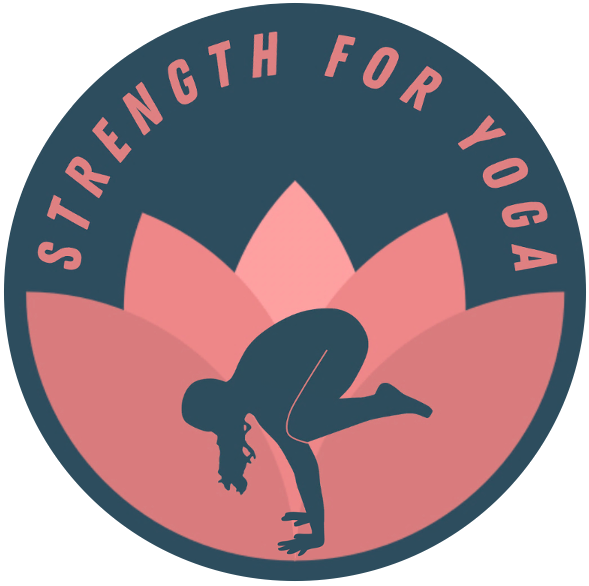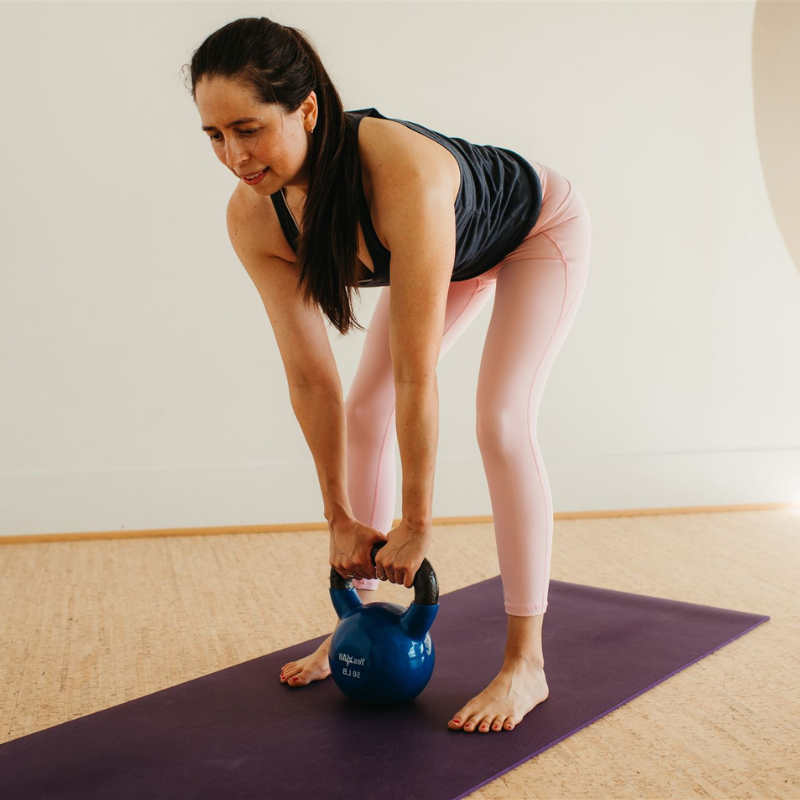Exercise Sequencing: How Context Shapes Your Workout
Have you ever noticed that the same exercise can feel different in our body depending on its context in our strength workout?
This is one reason exercise sequencing matters when it comes to planning our workouts!
We can use intentional sequencing to elicit different experiences in the same exercise.
Exercise Sequencing Example: The Deadlift
Let's use the example of the deadlift to illustrate how sequencing and context have a significant effect on what we might feel in an exercise.
(BTW, the deadlift is a quintessential strength training exercise in which we lift a weight up off the floor. For a more thorough description of the deadlift with visuals, variations, and technique tips, check out our blog post The Yogi's Guide to Deadlifting!)
If you're a regular deadlifter, you're familiar with the classic experience of the exercise:
hip hinging forward
grabbing the weight and firming your arms
feeling your posterior chain work as you stand back up.
Aside from these foundational, unchanging elements of a deadlift, there are other ways in which our experience of this exercise can vary.
Here are 3 factors that can influence how any deadlift might feel in a specific moment!
1) Where does the exercise take place in the overall workout?
With the deadlift example, we could choose to place this exercise at the beginning of our workout.
In this case, we'd probably use a heavier weight and perform fewer repetitions because our focus would be on building strength. This means we'd be working with a high level of effort over a relatively short amount of time.
Alternatively, we could choose to place our deadlift later, toward the end of our workout.
In this case, we'd use a lighter weight and perform a higher number of reps. This would entail using a lower level of effort over a longer amount of time. Our focus would be more on the muscular endurance side of the spectrum.
Although in both of these examples, we're performing the same exercise (a deadlift), our experience and sensations in each of these deadlifts will vary considerably!
2) What are we pairing the exercise with?
In strength workouts, we commonly group exercises into pairs of two called supersets. In a superset, we rotate back and forth between these two exercises a few times before we move on to our next pairing of exercises.
The way we sequence our supersets can also affect how we feel in an exercise! With the deadlift, we could choose to pair this exercise with, say, a push-up:
In this case, we'd be grouping a lower body exercise (the deadlift) with an upper body exercise (the push-up).
With this strategy, we'd spread our fatigue out between two non-competing exercises. This means that we'd feel relatively "fresh" when we practice each of them. The one would serve as "active rest" from the other.
On the other hand, we could pair a deadlift with something like a single-leg glute bridge:
In this case, we'd be pairing one lower body posterior chain exercise (the deadlift) with another (the single-leg glute bridge).
This means we'd be accumulating similar fatigue in both exercises, which would be more taxing for those muscles overall.
As you can see, our deadlift in each of these superset scenarios would feel quite different due to the varied nature of the fatigue involved!
3) What have we done around this specific workout?
Our experience in any exercise in the moment is also influenced by what we've been doing in the bigger picture, outside of this specific workout.
With our deadlift example, if we come into our workout having recently performed deadlifts (say, in our last workout), then our lower body may already be fatigued due to the residual effects of that previous workout.
This will affect how we feel in our deadlift in our current workout!
By comparison, if deadlifts haven't been in our strength programming lately, then we'll probably feel fairly "fresh" in this exercise in our current workout.
As you can see, we don't necessarily experience the same exercise in the same way every time we perform it.
Context plays an important role in what we feel and how we experience any exercise. This context is shaped by our exercise sequencing – both within a single workout and in the bigger picture of our recent workouts and overall programming.
To see this educational information presented in video format (with visual demonstrations!), check out our quick video: Exercise Sequencing: How Context Shapes Workouts!
Want to offload the job of meticulously planning out your exercise sequencing to two trusted professionals? :)
Join us in our Remote Group Training program, where we – an Exercise Science professor and longtime yoga teacher – do all of the programming work for you!
What is Strength for Yoga Remote Group Training?
A one-of-a-kind, yoga-specific strength training program
Created by a yoga teacher (Jenni) and an Exercise Science professor (Travis)
Monthly full-body workouts designed to enhance and fill in the gaps in a traditional mat practice
Train at home or in the gym
2 or 3 day/week training schedule
Community connection, Q's answered, & form feedback via an exclusive RGT forum
Start your 7-day free trial in our program today!
You Might Also Like…









